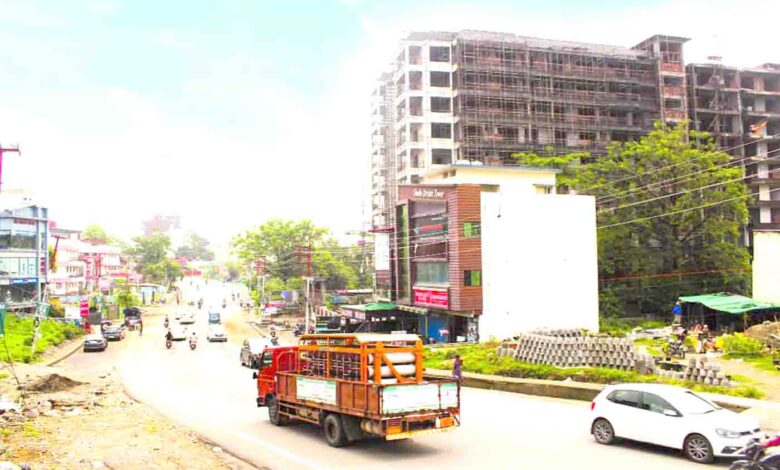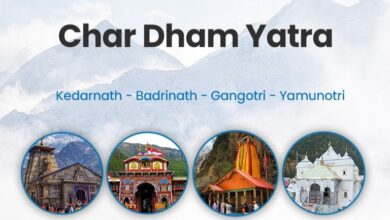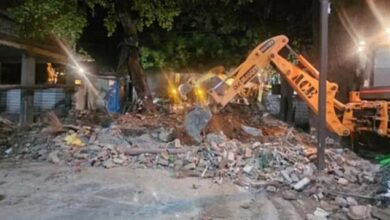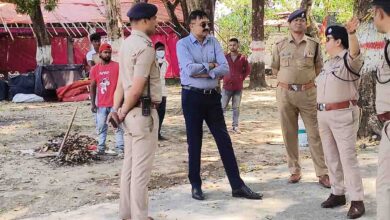Dehradun | Mourning the lost sights

Sunday, 14 July 2024 | Sidharth Mishra and Paritosh Kimothi
The once lush and serene Dehradun has undergone drastic changes with rapid urbanisation, changing the appearance and characteristics of the city. As high-rise buildings replace traditional housing, the environment and lifestyle here have undergone change, which may have brought profit for some, but long-term benefit for none, write SIDHARTH MISHRA and PARITOSH KIMOTHI
“Dehra Dehra Dun, Dehra Dehra Dun …….
Many roads can take you there, many different ways
One direction takes you years, another takes you days
Dehra Dehra Dun…….
Many people on the roads looking at the sights,
Many others with their troubles looking for their rights
Dehra Dehra Dun……
See them move along the road in search of life divine
…beggars in a goldmine
Dehra Dehra Dun…..
Many roads can take you there, many different ways
One direction takes you years, another takes you days
Dehra Dehra Dun…..” – Beatles
The legendry members of band Beatles stayed at the ashram of Maharishi Mahesh Yogi in Rishikesh in the spring 1968 composing some fabulous music. The old timers recall that during their stay in Rishikesh, the Beatles came to Dehradun on two occasions. Something struck them about the beautiful town and they went onto to compose the extremely hummable song.
Almost five decades later, this song has become the hymn to mourn the demise and death of the much loved Dehra of Doon. Dehradun was once an idyllic city with colonial bungalows surrounded by sprawling gardens. There were three arterial roads, one going to Mussoorie, the other to Chakrata and the third to Hardwar. All the three roads merged at Clock Tower, from where a fourth road took you inside the legendary Paltan Bazaar.
On the Chakrata side you had the sprawling paddy fields, home to the fabled Dehraduni basmati rice. The other two roads had the forests and the fruit orchards. Rajpur Road, the one which went to Mussoorie, had the bakeries and the bookshops. No wonder, Beatles said, “Many roads can take you there, many different ways l One direction takes you years, another takes you days”.
Two decades later in the year 2000, the hill districts of Uttar Pradesh became a separate state called Uttaranchal (later rechristened as Uttarakhand) with Dehradun as the temporary Capital. Quarter of a century later, Dehradun continues to be the seat of the government losing its gloss on a daily basis in the dust and pollution kicked by ‘development’.
Rapid urbanisation and large scale constructions have changed the very character of the city. In recent years multi-storeyed buildings have become a sight as common as the homes with expansive gardens were once. Large orchards and homes with greens have been demolished to build high rise apartments, commercial complexes and malls.
Does Dehradun, capital of a state which is seeing a large exodus of its population in search of employment elsewhere, need multi-storeyed buildings. Multi-storeyed buildings first came up in India in Mumbai mainly to accommodate the flocks which arrived looking for jobs.
Industrial and commercial activities attracted a large workforce of people. Chawls (labour colonies) were initially constructed and they were followed by the construction of flats to provide housing for the people who came to work in the nation’s commercial capital. Similarly, multi-storeyed buildings were constructed in Delhi, Noida, Gurugram and Ghaziabad to provide housing for the growing working force which settled in these locations.
However, Dehradun city has insignificant employment generation comparable to these cities. Yet the sprawling gardens and the lychee orchards the city was once famous for have been cut to build multi-storeyed buildings. In many cases, units in apartments and townships remain vacant as the owners are residents of Delhi-NCR, who have bought the property to spend the winter in Doon to get away from pollution. Some may view this as a sign of development but there are many who disagree.
Anoop Nautiyal, the founder of Social Development for Communities (SDC) Foundation says, “There is a design in facilitation of such unplanned urbanisation. Though the draft master plan 2041 prepared by the Mussoorie Dehradun Development Authority (MDDA) mentions the seismic fault lines passing through this region, the construction activities here display a sense of bravado and a cavalier attitude.”
The draft master plan recommended no development activities within 50 metres from the centre of the fault lines. The plan marks 35 fault lines, including three major ones – the Main Boundary Thrust (MBT), the Himalayan Frontal Fault (HFF) and the Main Central Thrust (MTC) that pass through the Doon Valley. Dehradun city is located in seismic zone IV which is a high risk zone of earthquake occurrence.
Others point to the rapid dilution of the Doon Valley Notification of 1989. This notification was brought to preserve the unique and sensitive nature of the Doon Valley and to save Dehradun and Mussoorie from indiscriminate limestone quarrying. Social activist Reenu Paul mentions, “The Doon Valley Notification prevented construction of high rise buildings in the northern part of the valley and regulated other activities in the region. Diluting the notification constructions has been carried out doing irreparable environmental damage in the valley.”
She adds, “The foothill policy too is being violated as hills are being cut for constructions which has led to considerable rise in the frequency of landslides.” Paul also expressed concern at the damage caused to the Shivalik range for the construction of the much-touted Delhi-Dehradun expressway.
Thus the Dehradun-Mussoorie Road which was once lush and peaceful is now dotted by scores of apartments, commercial buildings and shopping malls. Such areas which were once serene are now crowded by people and vehicular traffic from neighbouring states with noise replacing the sounds of the wind and birdcalls which were once the character of such sites.
The building construction bye-laws have provisions like prohibition of any development on sites prone to landslides and which have a local gradient of more than 30 degrees. Such regulations have not always been enforced as there are many ways to circumvent it.
The emergence of apartment complexes has also altered the culture and lifestyle of the city which was once known for its sedated pace of life. The rampant concretisation and infrastructural construction at the cost of the green cover has affected the local environment drastically. A city where even ceiling fans were not common till a few decades ago experienced a record breaking maximum temperature of 43 degrees Celsius this summer.
The multi-storeyed buildings have brought with them a different lifestyle which counts air conditioners, luxury vehicles and SUVs along with recreation dependant on commercial establishments as its essential part. A number of large malls have come up in different parts of the city along with shops selling branded products in various localities.
The suburban areas which were once much more tranquil than the city are now bustling with crowds and noise as newer constructions continue to emerge to occupy what were once large open spaces. In recent times, concerned citizens and public groups have staged protests against the cutting of trees, which the government counters saying that it is for maintaining a balance between the ecology and economy.
“This is misconstrued concept of development. Constructions in Dehradun have brought no benefit to the people of Uttarakhand. A few who had land sold it and left, the builders benefitted and those who passed their plans took a share in the profit, completely destroying the character of the city, “ says Rakesh Tyagi, an NRI entrepreneur with home base in Dehradun.
Moaning development, Bhumika Chandola, who returned to Doon last year to escape pollution of Delhi-NCR, says, “Liquor shops are more frequent to cross by then chemist shops or other essentials. And the jams and traffic, construction, pollution, change in the eco system and weather is so visible. I guess I had the harshest summer in the last 25 years …this time.” Seeing Dehradun today, Beatles would have changed lines to say, “Many people on the roads mourning at the lost sights.”
(Sidharth Mishra is author & a Doon lover, Paritosh Kimothi is associate editor, The Pioneer, Dehradun Edition)






